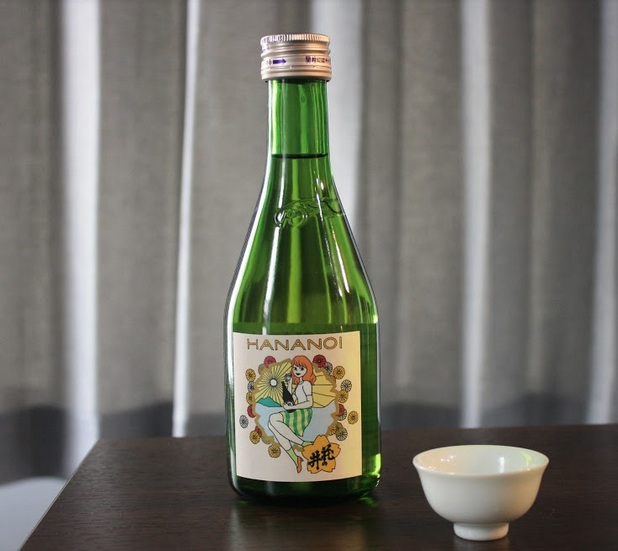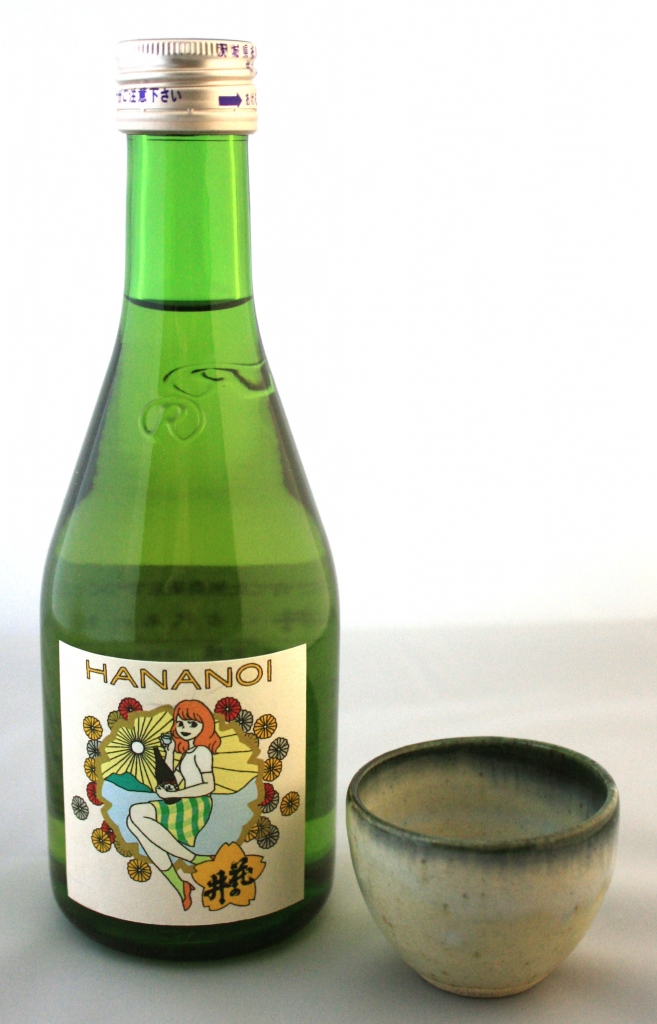
Sake review – Ancient Rice Sake In Modern Times
Written by Greg O’Keefe
I’m always amazed at the wide variety of flavors one can experience from sake. After all, it’s made basically from just rice and water. Recently, I joined a Sake Lovers online event with Nishioka Honten Brewery and enjoyed tasting their quite unique Hananoi Kodaimai Sake, which is made with rice commonly referred to as ancient or sacred rice.
I was fortunate to later interview the 8th generation family owner and toji (master brewer), Mr. Yuichiro Nishioka, about his brewery and the brewing of our sampled sake. With over twenty years of brewing experience, Nishioka is reputed to endlessly talk with passion about his Hananoi sakes. I indeed witnessed his detailed enthusiasm.
The Brewery
Nishioka Honten has roots as a sake brewery and mercantile business that date back to 1782. Located on 2.5 acres on the north side of Mt. Tsukuba in Ibaraki Prefecture, the brewery takes special pride in its rich history and deepening collaboration with the local community. One brewery building is registered as a national “tangible cultural property” and is used for sake tasting, sales, local art displays, and occasional events.
The brewery is small with only one fulltime brewing worker to assist the toji all year round and three part-timers who provide much needed support during the busy winter brewing season. Surprisingly, even with such a small staff, the brewery produces almost 20 sake brands, all junmai (without addition of high concentration brewers alcohol) which includes a few matured sakes as well.
Ibaraki Prefecture is well renowned for its high-quality table rice and Nishioka’s principle is to use local ingredients as much as possible to benefit the regional community. As “sake specific rice” is grown in only small quantities in Ibaraki, Nishioka chooses to directly contract with local rice farmers for his Yamadanishiki, rather than sourcing it from larger farmers outside of Ibaraki. For water, the brewery draws upon the local mineral-rich groundwater from the granite rock subterranean – Nishioka likens the water to Miyamizu (Nada sake region water in the Kobe region) which is famed for supporting robust fermentations due to its rich mineral content.
While Nishioka’s brewing style originated from the Echigo guild (Niigata), it has focused recently on leveraging brewing craftsmanship with local ingredients to brew more natural flavored sakes. To this end, seven years ago the brewery stopped using high concentrated brewers alcohol which is most common across the sake industry and now only produces junmai. Also, after years of experimenting with many types of yeast, today Nishioka primarily uses 2 strains:
・Kyokai #9 – while this yeast originates from Kumamoto (in Kyushu), the Ibaraki Kyokai #10 Meiri was apparently a little too strong for the sakes they wanted to brew.
・Sakura flower yeast – interestingly, the name Hananoi is actually derived from the “local well surrounded by Sakura”.
Hananoi Kodaimai Sake
The Kodaimai Sake has a unique story because it resonates with the history and culture of sake which was originally used as an offering to the gods (“omiki”), and is well received by its customers.
Kodaimai Sake uses two table rice varieties: Kodaimai (ancient rice) and Koshihikari rice polished to ratios of 90 percent and 60 percent, respectively. Both rice varieties are actually grown in the nearby Goshokomagataki Shrine and ducks are used in the rice paddy to protect the harvest from insects. No insecticides are used!
For Kodaimai Sake, Nishioka has developed a secret recipe using three different yeasts over a number of brewing steps and the moromi (main fermentation) is carefully controlled for low fermentation activity to retain a higher level of glucose. Nishioka carefully manages a warm, but short ferment, and with a target alcohol level of only 8 percent abv, the final brewed mash has considerable starch still remaining.
The kasu ratio (mass of remaining rice kasu or rice lees/cake over the mass of polished rice) is around a high ~50 percent. While such high kasu ratios may be common with some quality daiginjo styles of other breweries, Nishioka proudly explains most breweries would not find it commercially viable to do so for non-premium sakes such as Kodaimai Sake. Nishioka adds the goal is quality over quantity. This sake is not stored for long after filtering and immediately pasteurized for bottling and shipping.
Note that Kodaimai rice is not government inspected so any sake brewed with it can only be graded as regular sake.
Kodaima Sake Tasting
Let’s check out the sake! A distinctive clear gold color. Wow! You immediately pick up the sweet cereal aromas – reminds me of sherry actually. The taste is an interesting soft balance of sweetness with light acidity. Lead flavor is clearly the rice with a sweet flavor of azuki beans – my first experience of azuki flavor in sake. The low alcohol content should also make it quite pleasant for anyone to drink. It paired well with my meat and tomato puree dinner and matches really nicely with salty gorgonzola cheese.
The brewery recommends serving this sake chilled or on the rocks. They note it pairs well with deep fried foods, cheese, salami, and pizza. A curious participant of our online event suggests it would match well if poured over vanilla ice cream. Likely true!
Hananoi Kodaimai Sake is produced in limited quantities so it can be difficult to find, however the Sake Lovers online shopping site is an English language option. Trying this sake yourself will definitely be an enjoyable new experience.
Brewer: Nishioka Honten 6-1 Ta, Makabe-cho, Sakuragawa, Ibaraki Prefecture
http://hananoi.jp/ (Limited English content)
Sake reviewed: Hananoi Kodaimai Sake (古代米の日本酒) Bottled: Nov-2019
Interesting side facts:
・30 minute sake tours can be arranged outside of sake season but only available in Japanese
・Alcohol product lineup also includes shochu and umeshu
・Sakuragawa city has four sake breweries
・Makabe City holds displays of Hina Festival Dolls across 160 homes around March 3 annually attracting many tourists.
・Across the road from the brewery, an 800-year-old temple bell can be viewed.





